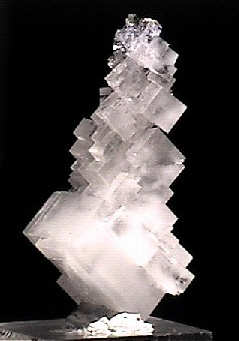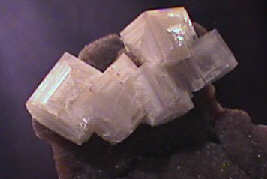BACKGROUND:
 Review
the characteristics of halite, especially its salty taste. Children take
salt for granted, but yet it is a unique compound that is important to many
animals including humans. Salt has been very important for humans.
Salt was used to preserve food before the refrigerator was invented. Imagine
a world without refrigerators! We need a balance of salt in our blood or we
would not be able to live. Review
the characteristics of halite, especially its salty taste. Children take
salt for granted, but yet it is a unique compound that is important to many
animals including humans. Salt has been very important for humans.
Salt was used to preserve food before the refrigerator was invented. Imagine
a world without refrigerators! We need a balance of salt in our blood or we
would not be able to live.
Although sodium and chlorine are very different
elements, they combine to form the compound halite (NaCl). Salt crystals
grow and break into cubes because the sodium and chlorine atoms are
arranged in what is called "cubic packing". A sodium atom is half
the size of an atom of chlorine, so chemically they combine perfectly in a
cubic patt ern, as shown in the diagram above. ern, as shown in the diagram above.
PROCEDURE:
- The purpose of this art lesson is to reinforce the concepts presented
in the previous labs on crystals. Review that all minerals are
crystalline, but only when the minerals have enough room to grow will
they exhibit visible crystal shapes.
- The Crystal and Gem Eyewitness book will appeal to your
students. There are so many stories in the book that we suggest you take
one and retell it to the students. Children are sure to tell you about
their jewelry at home.
- In the next part of the exercise, students will make a model of a
halite crystal. You may want them to color the crystals different
colors. Salt is naturally clear, white, or pink. Salt will take on any
natural dye, so it can be any color.
- Students should color the crystal before they cut it out. After
cutting, the students should fold the model along the black lines, using
a straight edge. If folded correctly, the crystal will go together
easily. Finally, students can glue or tape the tabs in place.
|